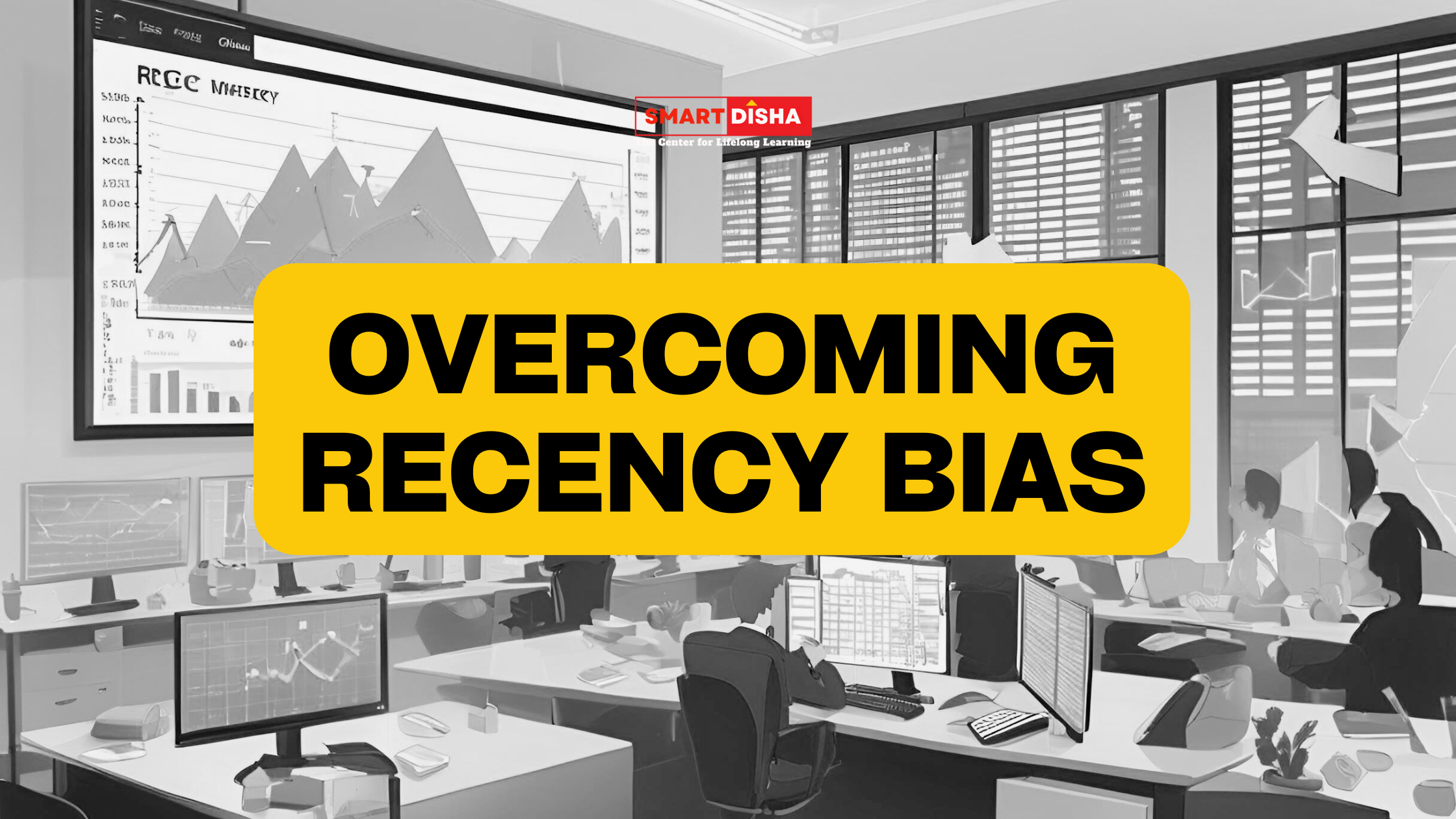Investing successfully requires rational decision-making and a long-term perspective, but cognitive biases can often interfere with sound judgment. One of the most common cognitive biases in the world of investing is recency bias. This psychological phenomenon can influence how investors perceive recent events and affect their investment decisions.
In this guide, we’ll explore what recency bias is, how it works, and its impact on investment strategies, while also discussing ways to mitigate its effects.
What is Recency Bias?
Recency bias refers to the tendency to give undue weight to recent events or trends while overlooking the broader, long-term picture. In the context of investing, this often means that investors may base their decisions on short-term market performance rather than fundamental factors, leading to impulsive or poorly timed moves.
For example, an investor who sees a stock experiencing rapid gains may assume the trend will continue indefinitely, despite the stock’s historical performance suggesting otherwise. Alternatively, after a market downturn, investors may become overly pessimistic, forgetting that markets typically recover over time.
How Recency Bias Affects Investment Decisions
Recency bias can have several detrimental effects on investment behavior, often leading to poor decision-making. Here are some common ways in which this bias manifests:
1. Chasing Recent Market Trends
- Description: Investors influenced by recency bias may feel tempted to invest in assets that have recently outperformed, expecting the same returns to continue. This can lead to buying at high prices, just as the market is peaking.
- Impact: By focusing only on the recent performance, investors may overlook important indicators like overvaluation or the asset’s volatility, which can result in poor investment returns when the market reverses.
2. Overreacting to Market Volatility
- Description: Sudden market declines or corrections can trigger panic selling, particularly among investors heavily influenced by recent price drops.
- Impact: This reaction can lead to selling assets at a loss, even when the long-term outlook remains positive. Recency bias can prevent investors from seeing that short-term volatility is a normal part of market behavior.
3. Ignoring Long-Term Investment Fundamentals
- Description: Recency bias may cause investors to dismiss long-term fundamentals like earnings growth, valuations, or industry trends in favor of focusing solely on short-term price movements.
- Impact: When investors focus only on recent developments, they risk missing out on solid investment opportunities based on the long-term health of a company or sector.
4. Underestimating Market Cycles
- Description: Investors may assume that a bull market or bear market will continue indefinitely, without recognizing the cyclical nature of markets.
- Impact: Recency bias may lead investors to buy during bubbles or sell during downturns, rather than riding out the cycles and capitalizing on eventual market recovery.
Examples of Recency Bias in Action
To illustrate the effects of recency bias, here are two real-world examples:
1. The Dot-Com Bubble (Late 1990s)
- What Happened: During the late 1990s, technology stocks experienced rapid growth, and many investors assumed that these high returns would continue indefinitely. Driven by recency bias, they ignored the overvaluation of tech stocks, leading to heavy investments just before the bubble burst in 2000.
- Outcome: When the bubble finally collapsed, investors suffered significant losses because they based their decisions on recent performance rather than considering long-term fundamentals.
2. The 2008 Financial Crisis
- What Happened: After the market crash in 2008, many investors sold off stocks in a panic, assuming the market would continue its downward spiral indefinitely.
- Outcome: Despite the market eventually rebounding and reaching new highs, investors who acted on recency bias locked in losses by selling at the lowest point of the cycle.
How to Mitigate Recency Bias in Your Investment Strategy
Recency bias can be difficult to eliminate completely, but there are strategies investors can employ to mitigate its effects and make more rational, long-term decisions:
1. Maintain a Long-Term Perspective
- Tip: Focus on the long-term potential of your investments rather than short-term price movements. Review historical performance, company fundamentals, and industry outlooks before making decisions.
- Why It Works: A long-term perspective helps smooth out the emotional responses triggered by short-term market fluctuations.
2. Stick to a Diversified Portfolio
- Tip: Diversify your portfolio across different asset classes, sectors, and geographies to reduce the impact of any one event or trend on your overall returns.
- Why It Works: Diversification minimizes the risk of overreacting to recent performance in a single sector or asset class, keeping your portfolio balanced.
3. Avoid Emotional Reactions
- Tip: Try not to make impulsive decisions based on recent events. Instead, take time to reflect on your investment strategy and goals. Automated or passive investment strategies can help you stay disciplined.
- Why It Works: Emotional reactions often stem from recency bias, leading to decisions that don’t align with your long-term objectives.
4. Review Data and Historical Context
- Tip: Regularly review historical market data to understand how similar events played out in the past. Comparing current trends with historical cycles can provide valuable context and reduce overreliance on recent events.
- Why It Works: Understanding historical patterns helps you recognize that markets tend to recover from downturns, preventing panic-selling.
5. Use Dollar-Cost Averaging
- Tip: Invest consistently, regardless of market conditions, through dollar-cost averaging. This strategy helps smooth out the impact of market volatility by buying more shares when prices are low and fewer shares when prices are high.
- Why It Works: Dollar-cost averaging reduces the likelihood of timing the market based on recent performance, leading to more disciplined investing.
Conclusion:
Recency bias can have a significant effect on investment decisions, causing investors to make short-sighted moves that can harm long-term returns. By recognizing the signs of recency bias and employing strategies to mitigate its effects, investors can avoid common pitfalls and make more informed decisions. Maintaining a long-term perspective, sticking to a diversified portfolio, and avoiding emotional reactions are all key steps in overcoming this cognitive bias.
Successful investing requires patience, discipline, and a focus on the bigger picture, rather than letting short-term events dictate your strategy.




